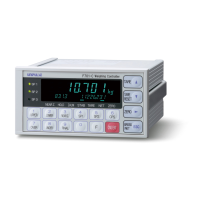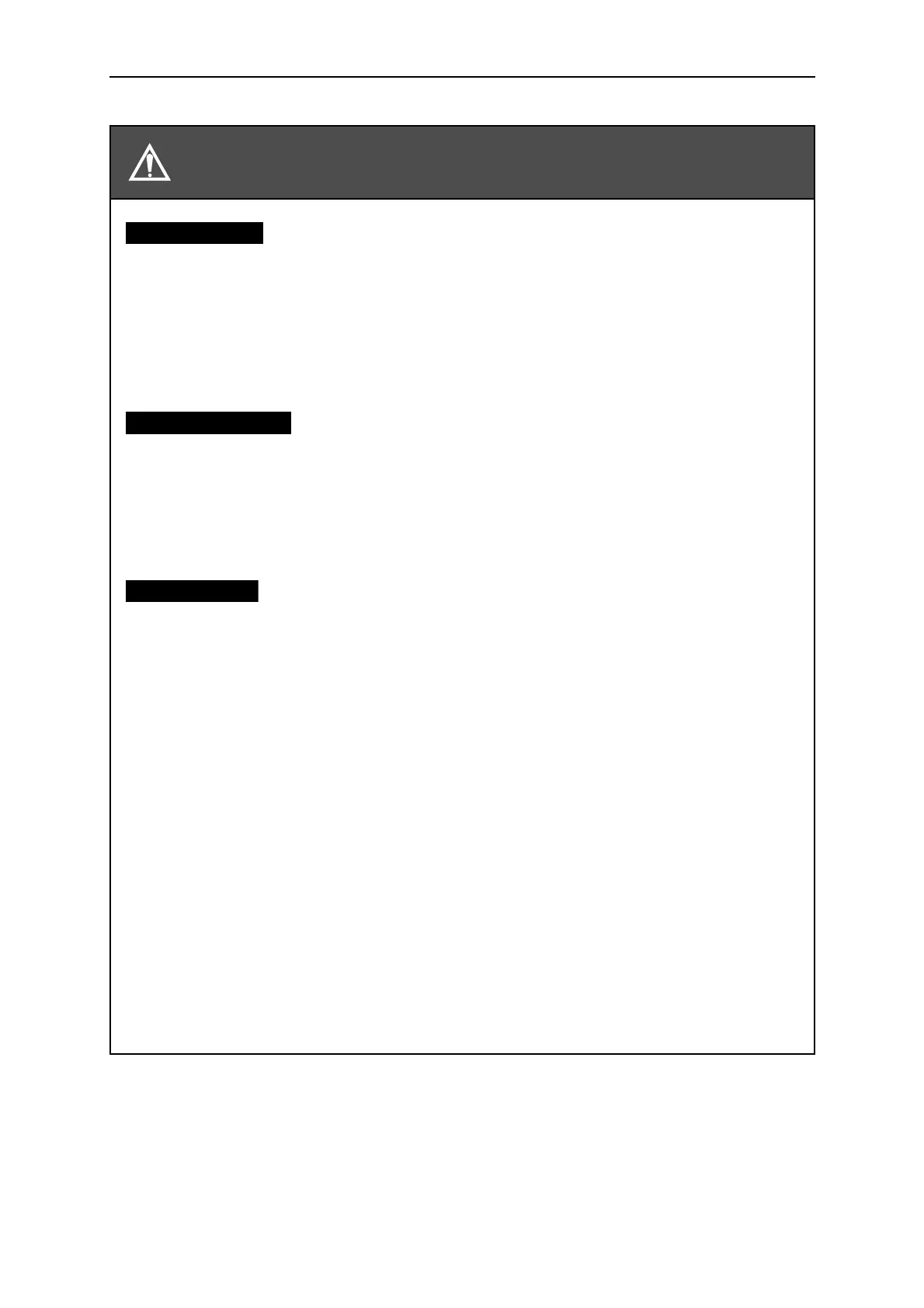SAFETY PRECAUTIONS
II
WARNING
● For the entire system to function safely when the F701-C becomes faulty or malfunctions,
provide a safety circuit outside the F701-C.
● Before using the F701-C as described below, make sure to consult with our sales personnel.
- Use in environments not described in the operation manual.
- Use greatly impacting human lives and assets, such as medical devices, transport devices
entertainment devices, and safety devices.
● Do not disassemble, repair, or modify the F701-C. Doing so may cause a fire or an electric
shock.
● Do not install in the following environments.
- Places containing corrosive gas or flammable gas.
- Where the product may be splashed with water, oil or chemicals.
● Do not connect a commercial power source directly to the signal input/output terminals.
● Be sure to ground the protective ground terminal.
● The attached AC cable is designed for domestic use in Japan, and its rating is 125V AC, 7A.
For use at voltages exceeding the rating and for overseas use, have a separate AC cable
prepared.
● Before performing the following, make sure that no power is applied.
- Attachment/detachment of connectors of options, etc.
- Wiring/connection of cables to the signal input/output terminals.
- Connection of the earth cable.
● For connection to the signal input/output terminals, check the signal names and pin
assignment numbers, and then carry out wiring properly.
● Be sure to use crimp contacts for connection to the terminal blocks, and do not to connect
bare wires as they are.
● After wiring, be sure to mount the attached terminal block cover. Otherwise, it may cause an
electric shock.
● Do not connect anything to unused terminal(s).
● Before applying power, carefully check the wiring, etc.
This sign forewarns the presence of hazards
that could result in serious injury or fatality
when incorrectly handled.

